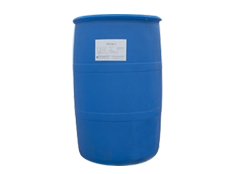Surfactant will produce a lot of acid mist in acid pickling, which not only affects the health of workers, but also pollutes the environment. At the same time, it will corrode the plant and equipment. In order to improve the rust removal effect of acid pickling and prevent acid over corrosion, adding surfactant into sulfuric acid or nitric acid in acid pickling can inhibit acid mist, speed up acid pickling and prevent over corrosion. Formula: hydrochloric acid 1 ~ 10% nitric acid 1 ~ 8% kingly phenolic acid polyoxyethylene 0.1 ~ 20%.

The raw material source of alkyl polyglycoside surfactant has been expanded from petroleum to coal, oil shale, microorganism and industrial waste liquid.
For example, crude diesel oil from coal hydrocracking or creosote oil from coal tar fractionation is an ideal raw material for the preparation of sulfonate surfactants because of its rich aromatic components; Shale oil from oil shale retorting is an important raw material of cationic surfactant because it is rich in nitrogen compounds; Biosurfactants derived from microbial metabolites can be used for oil displacement; The lignosulfonate obtained from waste liquor of paper mill can produce surfactant by alkylation and oxidation, which can be used to treat formation. By expanding the source of surfactant raw materials and reducing the cost of surfactant, we can meet the large demand of surfactant in oilfield.
Surfactants used in synthetic detergents are not pure single compounds, and often contain more or less adjacent homologues. Moreover, surfactants account for less than 1 / 3 of the total weight in detergent formula, and the rest are various auxiliaries and auxiliary agents, which play different roles. Therefore, the role of synthetic detergent in the washing process is a complex comprehensive process.
The main component of synthetic detergent. Amphiphilic molecules with both lipophilic (hydrophobic) and hydrophilic (oleophobic) parts in chemical structure can be adsorbed on the two-phase interface and arranged as single molecules to reduce the surface tension of the solution. This property is called surface (interfacial) activity, and the substances with surface activity are called surface (interfacial) surfactant.